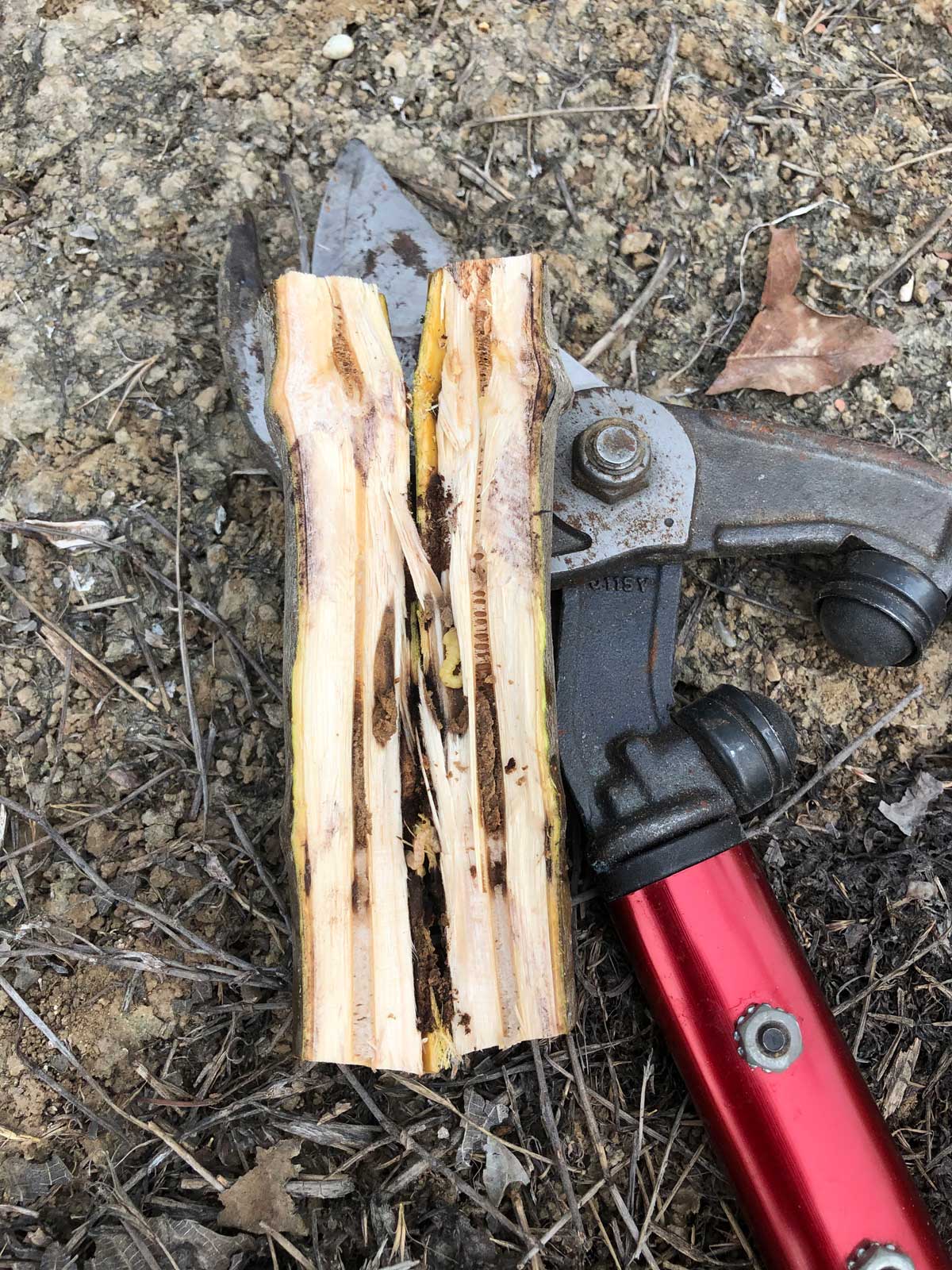
It is not so much that flat-headed borer (FHB) infestations in California walnut orchards are increasing; rather, growers are now more aware of this pest and the damage it can cause, particularly in young trees.
Three years ago, when signs of FHB infestations began to appear in San Joaquin and Stanislaus counties, UCCE IPM Specialist Jhalendra Rijal heard from growers about flagged branches, dead twigs and canker-like symptoms on tree trunks. Since that time, infestations of this pest were reported in northern and southern walnut growing regions of the state. Reports have increased, Rijal said, as more growers recognized signs of infestations.
Flat-headed borer is a larval stage of one specialized group of beetles. The name ‘flatheaded’ comes from the enlarged and flattened shape just behind the head in the larval stage. Adult FHB are a half-inch to three-quarters of an inch long with a wedge-shaped body. They lay eggs in weakened portions of bark cracks. Newly hatched larvae bore into wood and feed on the cambium layer. The larvae overwinter in the pre-pupal stage and emerge as adults in the spring or early summer, leaving ‘D’-shaped exit holes in the tree.
Walnut trees are one of many tree species that are hosts to FHB.
Rijal said that if a grower found signs of an infestation last year, it is likely to re-occur this year. Rijal said FHB adults are attracted to stressed trees, and the drought conditions and extreme heat during the summer opened up opportunities for infestations.
Wounds on tree trunks, sunburned areas and other openings in the tree bark are likely openings for FHB egg-laying.
To confirm presence of FHB in an orchard, growers can peel back bark on a suspected branch and look for feeding tunnels packed with frass or larvae. Larval finds may be easier to find in the summer when feeding occurs just below the bark. The D-shaped exit holes can be found on infested tree limbs. Amber sap may be present.
Rijal said while pesticide controls for other walnut pests may have some effect on the adult FHB, there are currently no control methods in young trees. Growers who find extensive damage often opt to remove trees and replant. Protecting young trees from sunburn with paint can also prevent entry and egg laying.
No traps or lures have been found to be effective in monitoring FHB pressure. Rijal said trials to determine detection and control are planned for 2022.











